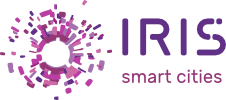
Turning smart city ambitions into partnerships and investment plans is a challenging path. To inspire and guide cities in this process, IRIS Smart Cities spoke with three people who made it happen in Utrecht: Muriel Pels and Inge van de Klundert from Municipality of Utrecht and Carolien van Hemel of Utrecht Sustainability Institute.
How can we choose integrated solutions to accelerate the energy transition, in a specific district, in a given time? How can we connect stakeholders and their interests collaboratively in an investment and implementation plan? Utrecht, Gothenburg and Nice Cote d’Azur have each gone through this process, laying the foundations for the IRIS Smart Cities project. They developed an investment and implementation plan with local partners incorporating ICT, energy, mobility and citizen engagement. The projects’ four fellow cities are now facing the same challenges.
While it wasn’t always a slice of heaven, Utrecht outlined their journey and key success factors to provide insight in the process of building a smart city. Today, they have a dynamic, developing urban area and an IRIS demonstration site that embodies the project’s smart, sustainable and co-creation pillars.
An iterative approach over time
The birth of IRIS Smart Cities in Utrecht dates back to numerous converging initiatives. Top down, a municipal coalition agreement in 2014 emphasized a multi-stakeholder approach to accelerate the energy transition. City engagement in EUROCITIES working groups on mobility, environment and knowledge society as chair or co-chair helped to inspire new ideas and expose councilors and civil servants to best practices.
“Participating in European project development and attracting funds from diverse sources such as INTERREG and Horizon2020 required a substantial and concerted effort; but helped to build trust in European cooperation, create momentum, and support micro-pilots across the city” says Muriel Pels. “It also helped us to identify and prioritize city strengths, work together with innovative SME’s and tap into local and international process expertise”.
The know-how, relationships and tangible results, inspired the city to target a flagship ‘Smart Cities and Communities’ funding call. Following up on actions from previous project such as a near zero energy retrofit as part of the Climate-KIC Smart Sustainable Districts (SSD) programme.
Setting a smart city consortium in motion – twice
“A clear and well researched project proposition, shared transparently, was an essential starting point” according to Carolien van Hemel of USI. “We tried to identify and build on the assets and ambitions of everyone in the core group. Did it fit with their thematic focus, plans and investment strategies?” Actors included energy grid operator Stedin and LomboXnet, a SME creating smart solar charging solutions for e-vehicles.
With a solid skeleton document in play the natural step was to get everyone around the table. But meetings never quite delivered with several directors together. “The conversations did not become open enough to really advance ideas” explained Carolien. “We realised that smaller meetings – 1:1 even if possible – were key to building openness and trust in the early stages of a complex project”. USI and the municipality also tried to identify the right profile of person to talk with, not necessarily just start at the top. “Talk with a contact at the stakeholder organisation that understands the project proposal, has a degree of expertise and is able to communicate it well internally”.
With ambassadors recruited in key partner organisations, the second step was to look for a real estate owner with a renovation property and timeline that could fit. After several exploratory conversations, social housing corporation Bo-Ex provided the perfect fit. Energy company Eneco came on board and University of the Arts Utrecht (HKU) also joined to bring co-creation and gamification expertise into the project.
A first European lighthouse project proposal was submitted by Utrecht in 2016. It was well appraised, but unsuccessful. Back to the drawing board and some critical thinking for the Utrecht ecosystem. Invited to participate for a second shot: Civity, a young SME that really understood the potential of (open) urban data to foster innovation and deliver better services; telecoms company KPN; and local mobility provider Qbuzz.
Adding new partners certainly enriched Utrecht’s smart city plans, but also brought challenges. Carolien Van Hemel: “During the entire process of finding and aligning stakeholders around the basic project proposition, it was important to be aware of possibly conflicting interests between stakeholders. Cities need to be creative in finding and offering solutions to this”.
Key ingredients and the vital details
Behind every project are the people and organisations. Having a catalyst, broker and champion is essential. Utrecht Sustainability Institute has a strong DNA of connecting researchers, sustainability advocates and near-to-market solution providers. It is a young organisation willing and able to take risks. Their collaboration with the municipality was highly complementary and based on a dedication and trust in each others’ teams.
This role of smaller, more agile catalyst organisation is also visible elsewhere in IRIS Smart Cities. Jonanneberg Science Park has been instrumental in Gothenburg, The Energy Hive for fellow city Alexandroupolis and Sustainable Building Cluster in Santa Cruz de Tenerife immediately spring to mind.
With all the interests and ambitions aligned in the demonstration, discussions inevitably come to the vital issue of money. For Utrecht, transparency was again the key word and efforts made to fully understand each other’s interests. Individual and confidential meetings led to a clear budget proposal to be shared and finalise together. The whole process required a lot of calls and in-person exchange.
Replicating the demonstration development process
So, are there any more pointers for fellow cities looking to replicate or any other smart city initiative takers to keep in mind? For Utrecht and IRIS Smart Cities, the principal vector was a major European Union funding call. An external framework and strict deadlines can give useful impetus, but even if not present, try and keep good pace and build momentum to the ideas and planning.
A good framework for this, advises Carolien van Hemel, is to organize people and initiatives around specific priorities or themes. It could be the UN’s Sustainable Development Goals or a more local long-term vision for sustainability. It also circumnavigates the beneficial but sometimes risky attachment to political or personality sponsored themes. Political support for a demonstration can be a driver, but politicians can change or get cornered by their commitments and cannot give the same quality of support.
IRIS fellow city Santa Cruz de Tenerife, for instance, has converged around a ‘green for 2030’ strategy. Their flagship program, channels numerous initiatives to: develop new green spaces, provide efficient public services and ensure a sustainable energy supply. It is a principal driver in a vision for innovation, entrepreneurship and creativity to prepare for the future set out for the entire island. Santa Cruz has also used an EIP-SCC methodology and external actors to accelerate alignment around this. According to the methodology co-author, Judith Borsboom-van Beurden, Senior Researcher at NTNU University, “an early involvement of all governmental and non-governmental actors is fundamental for maximising the output and the Guidance Package for Integrated Planning and Management can provide ideas how to do this.”
Finally, cities looking to set up their own demonstrators should look at the commercial and market dynamics. Are services largely provided by large companies or predominantly SMEs? The stakeholder engagement process and agreements made might be very different accordingly. A municipality and all partners can benefit for taking a good look into who supplies the solutions or services and who might buy and benefit from them before making plans final.
Whatever your plans are, check in with IRIS Smart Cities progress on twitter, LinkedIn or online. Lead by the city of Vaasa, Finland, a set of replication plans for fellow cities and adoption of appropriate solutions will be happening during 2020-2021.
Photo by Kelly Sikkema on Unsplash
IRIS #SmartCityVisions series
22 Nov 2019

